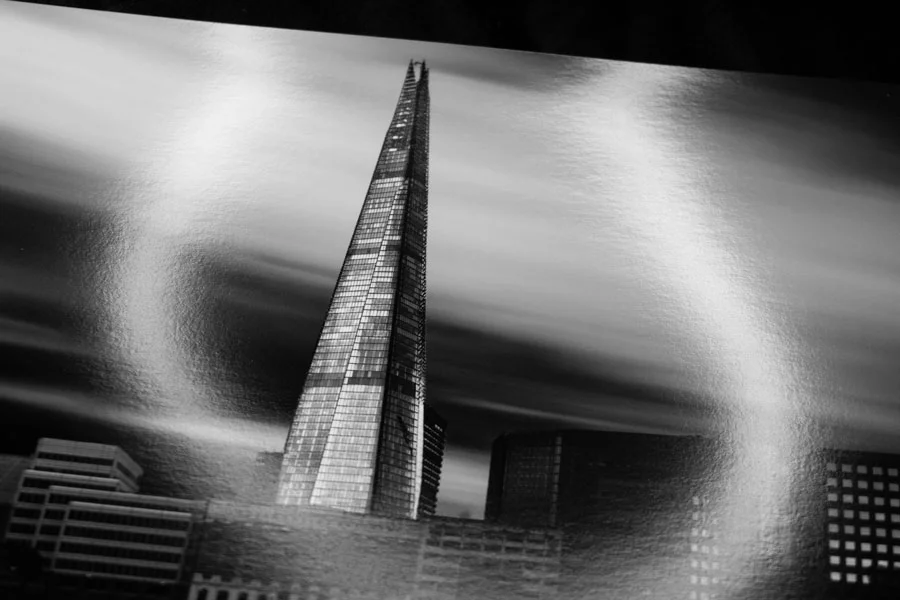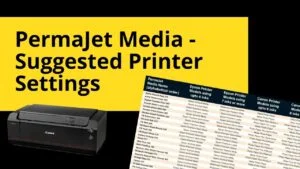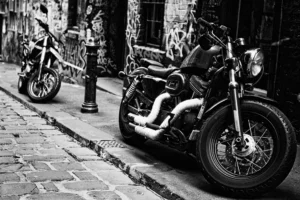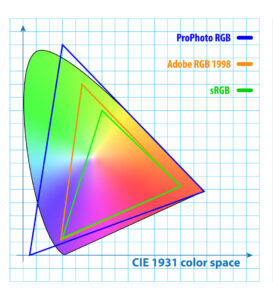Baryta paper (otherwise known as fibre based paper) has been around since the turn of the century, and was a natural progression from the original fibre based darkroom papers manufactured by the likes of Ilford and Agfa.
Traditional darkroom papers provided photographers the ultimate in archival stability and longevity. It was these qualities that photographers sought when switching from traditional darkroom processes to the new arena of digital inkjet printing.
What is Baryta Paper?
Baryta photo paper is manufactured by adding a Barium Sulphate coating directly onto an alpha-cellulose base before applying the ink-receiving coating. This chemical coating helps provide not only deep blacks but also high contrast due to its level of whiteness and its inert properties. This helps provide extended archival qualities of the finished product.
Unique Characteristics of Baryta Paper
Photographers primarily use Baryta papers both for monochrome images and to replicate the look and feel of traditional wet process prints, which subsequently means they need to achieve a gloss type finish for the final print. This is also termed an ‘unglazed’ gloss look, as photographers achieved a higher gloss finish on traditional darkroom FB papers by placing them on a heated glazing drum. While most photographers desire the gloss effect, the advanced capabilities of the manufacturing process also enable the production of a matt finish. This paper finish enables users to display images behind glass without risking a double reflection caused by lighting.
In the arena of Baryta fine art paper, the texture itself is much less of a key component when compared to cotton rag papers. It is much more about the weight (approx. 300gsm) and the sumptuous feel that these papers can provide.

When and Why to Use Baryta Paper
When considering the final application of an image and the paper to choose, Baryta papers tend be chosen when the artist wants to maximise impact with deep blacks and/or saturated colours. The level of black that be achieved with either dye based or pigment inks is far superior to that when using a matt paper, whether it is Baryta or cotton rag.
Mounting Options for Baryta Paper
Another key consideration when choosing a Baryta paper is the way you want to display your print. Many people prefer to mount the finished print onto Dibond(*) due to the robustness of the alpha cellulose base. This method provides an extremely smooth and flat surface for hanging in various environments. Everyday papers, such as RC Gloss or Lustre, are produced on much less robust bases. As a result, they can be more difficult to handle and mount.

How to Choose the Best Baryta Paper for Your Needs
Within the PermaJet Fibre Based range there are currently 6 papers. Their key characteristics are as follows:
1. FB Pearl 300
- Sumptuous pearl surface
- 300gsm with a natural white base
- Prints high Dmax and rich colours
2. FB Gold Silk 315
- Subtle silk/satin surface
- 315gsm with a natural/warm white base
- Record-breaking Dmax levels for rich blacks
3. FB Royal Gloss 310
- Subtle gloss surface
- 310gsm with a natural white base
- Excellent for wildlife, portraiture and landscapes
4. FB Distinction 320
- Delicate gloss surface
- 320gsm with a bright white base
- Excellent for both monochrome and colour
5. FB Matt 285
- Smooth matt surface
- 285gsm base weight
- Excellent for exhibitions and galleries
6. Baryta Rag 310
- Satin surface
- OBA Free
- 310gsm natural white base
In conclusion, as with any paper range that you’re considering, we strongly recommend purchasing a Test Pack if you’re unsure which paper best suits your images. This will enable you to print a representative image of your work on all the papers to see which is best for you.
FAQ’s
What type of paper is Baryta?
Baryta paper is paper that is manufactured by adding a Barium Sulphate coating directly onto the alpha-cellulose base before applying the ink-receiving coating.
Is Baryta paper glossy or matte?
It is primarily glossy but is also available in some matte options.
When to use Baryta paper?
Baryta paper is best for images with deep blacks and high levels of contrast and fine detail. It is also a preferred choice for monochrome work. Due to its high quality, many use it for fine art photographic prints, exhibitions, and more.
Is Baryta paper archival?
This paper is archival due to its base material and acid free nature. There are also some OBA free options.
(*)Dibond panels are a high-quality, lightweight sheet material made of a polyethene core sandwiched between two aluminium skins.






